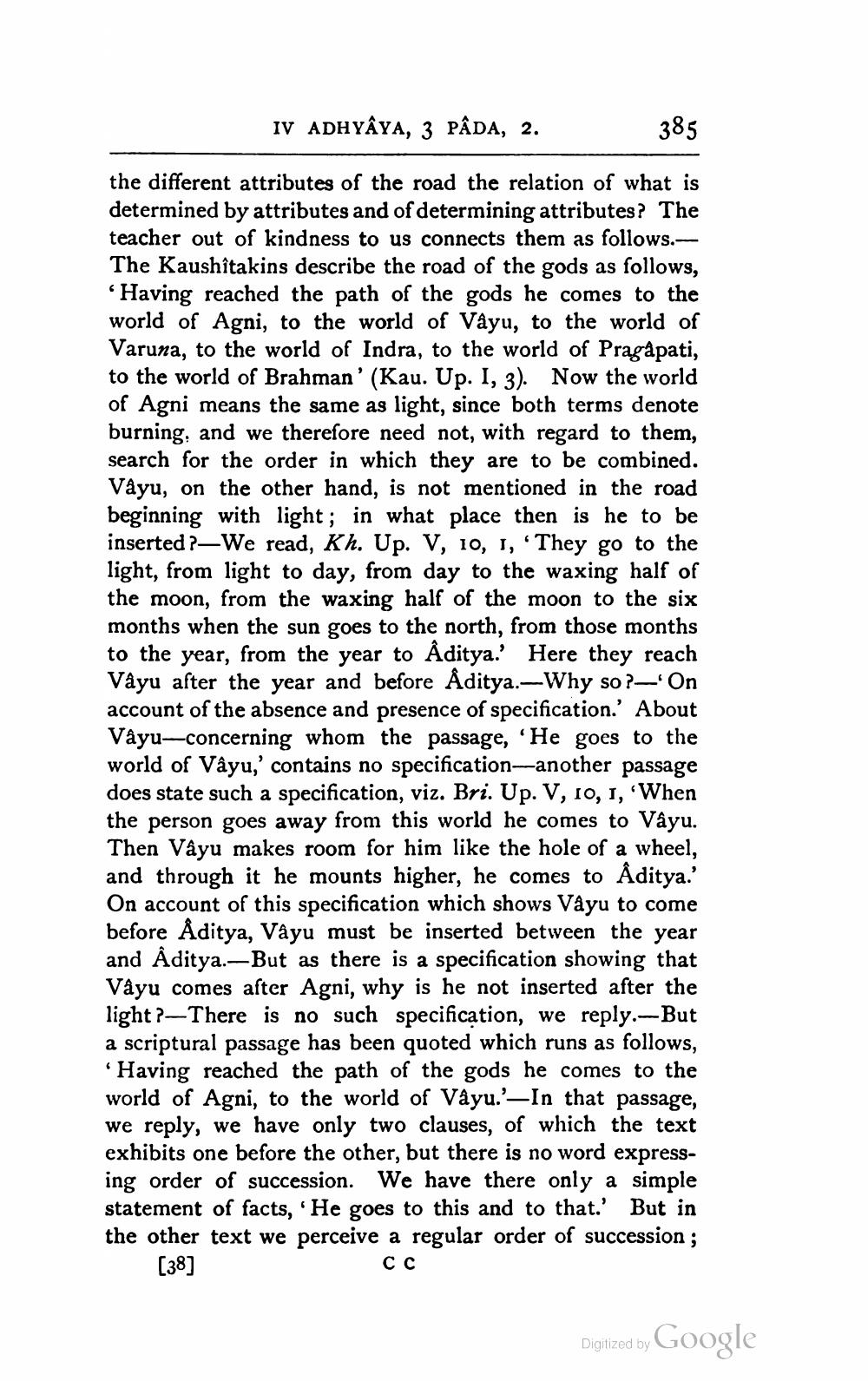________________
IV ADHYAYA, 3 PÂDA, 2.
385
the different attributes of the road the relation of what is determined by attributes and of determining attributes? The teacher out of kindness to us connects them as follows.The Kaushitakins describe the road of the gods as follows, Having reached the path of the gods he comes to the world of Agni, to the world of Vayu, to the world of Varuna, to the world of Indra, to the world of Pragàpati, to the world of Brahman' (Kau. Up. I, 3). Now the world of Agni means the same as light, since both terms denote burning, and we therefore need not, with regard to them, search for the order in which they are to be combined. Vayu, on the other hand, is not mentioned in the road beginning with light; in what place then is he to be inserted ?—We read, Kh. Up. V, 10, 1, 'They go to the light, from light to day, from day to the waxing half of the moon, from the waxing half of the moon to the six months when the sun goes to the north, from those months to the year, from the year to Aditya.' Here they reach Vayu after the year and before Aditya.—Why so ?— On account of the absence and presence of specification.' About Vayu-concerning whom the passage, ‘He goes to the world of Vâyu,' contains no specification-another passage does state such a specification, viz. Bri. Up. V, 10, 1, 'When the person goes away from this world he comes to Vayu. Then Vâyu makes room for him like the hole of a wheel, and through it he mounts higher, he comes to Aditya.' On account of this specification which shows Váyu to come before Åditya, Vayu must be inserted between the year and Aditya.—But as there is a specification showing that Vậyu comes after Agni, why is he not inserted after the light ?— There is no such specification, we reply. But a scriptural passage has been quoted which runs as follows, * Having reached the path of the gods he comes to the world of Agni, to the world of Vayu.'-In that passage, we reply, we have only two clauses, of which the text exhibits one before the other, but there is no word expressing order of succession. We have there only a simple statement of facts, 'He goes to this and to that.' But in the other text we perceive a regular order of succession; [38]
сс
Digitized by
Digized by Google




